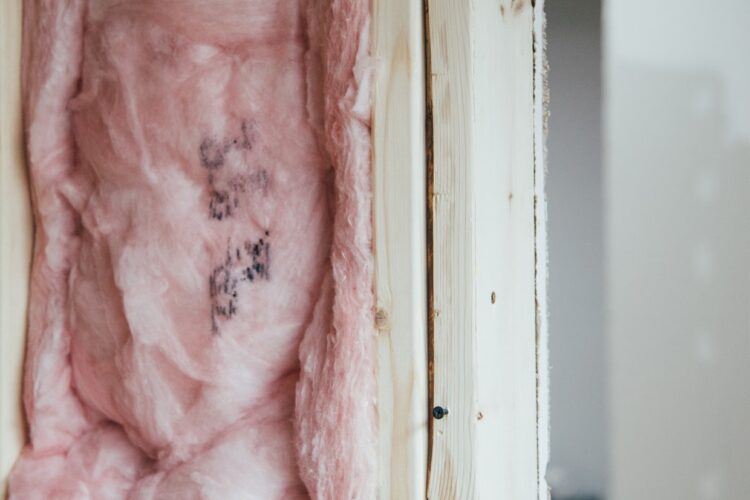
Do suspended ceilings require insulation?
Suspended ceilings, also known as drop ceilings or false ceilings, are versatile and practical solutions for various interior spaces. They are a convenient way to cover up unsightly infrastructure and improve acoustics, but do they need insulation, and is it necessary?
Suspended Ceiling Basics: Materials and Installation Process
Suspended ceilings, also known as drop ceilings or false ceilings, provide versatile and practical solutions for various interior spaces. They consist of a lightweight metal grid that supports removable ceiling tiles or panels, allowing easy access to the space above for maintenance, repairs, or updates. These systems are common in commercial and residential buildings, offering both aesthetic and functional benefits.
Types of Insulation for Suspended Ceilings: An Overview
When it comes to insulating suspended ceilings, several options are available. The most common types include fibreglass batts, mineral wool, rigid foam board, and spray foam insulation. Each of these materials offers unique advantages, such as varying R-values, soundproofing capabilities, and moisture resistance. The choice of insulation depends on your specific needs and budget.
Thermal Insulation Benefits for Suspended Ceilings: Energy Efficiency and Comfort
Adding insulation to a suspended ceiling can significantly improve a building’s energy efficiency. It reduces heat transfer between the ceiling and the space above, thereby maintaining a comfortable indoor temperature. This thermal barrier helps minimise energy consumption, leading to lower utility bills and reduced carbon emissions.
Acoustic Insulation for Suspended Ceilings: Sound Absorption and Noise Reduction
Insulating a suspended ceiling can also enhance its sound-absorbing properties. Certain insulation materials, such as fibreglass or mineral wool, are excellent at reducing noise transmission between floors or rooms. This makes them ideal for creating quieter living or working environments, especially in multi-story buildings or areas with high levels of external noise.
Fire Safety Considerations: Insulation Materials and Fire Ratings
Choosing the right insulation for suspended ceilings also involves considering fire safety. Many insulation materials are available with specific fire ratings, indicating their ability to resist combustion and slow the spread of flames. When selecting insulation for your project, ensure it meets local building code requirements and provides adequate fire protection.
Moisture Control and Insulation: Preventing Mould Growth in Suspended Ceilings
Insulating suspended ceilings can help prevent moisture-related issues, such as mould and mildew growth. Properly installed insulation acts as a barrier against moisture intrusion, reducing the potential for dampness and water damage. Additionally, some insulation materials have moisture-resistant properties, making them better suited for use in humid or moisture-prone environments.
Maintenance and Cleaning of Suspended Ceilings with Insulation
After installing insulation in a suspended ceiling, it’s essential to maintain and clean it regularly. The insulation material can accumulate dust, dirt, and debris over time, which can reduce its effectiveness and lead to potential health hazards. Proper maintenance and cleaning of the suspended ceiling with insulation can ensure its long-term performance and the occupants’ health and safety.
Building Code Requirements for Suspended Ceiling Insulation
Before insulating a suspended ceiling, it’s essential to consult local building codes and regulations – this is a legal requirement. These guidelines dictate the minimum R-value, fire rating, and other specifications for insulation materials. Adhering to these requirements helps ensure your project’s safety, compliance, and long-term performance.
Insulation Installation Techniques for Suspended Ceilings
There are several methods for installing insulation in a suspended ceiling. The most common technique involves placing batts or rigid foam panels between the ceiling grid and the tiles or panels. Alternatively, spray foam insulation can be applied directly to the underside of the floor above, creating a continuous barrier that adheres to irregular surfaces and fills gaps effectively.
Selecting the Right Insulation Materials for Your Suspended Ceiling Project
When choosing insulation for a suspended ceiling, consider factors such as thermal performance, soundproofing, moisture resistance, and fire safety. Additionally, evaluate the installation process, ease of maintenance, and overall cost. By assessing these factors, you can select the insulation material that best aligns with your project goals and budget.
Cost-Benefit Analysis: Evaluating the Expense and Advantages of Insulating Suspended Ceilings
When it comes to insulating suspended ceilings, it is important to assess the costs of the materials and labour required against the potential benefits. Suspended ceilings provide a convenient way to cover up unsightly infrastructure and can also improve the acoustics of a room.
However, they can also be a major source of energy loss, leading to increased heating and cooling costs. By conducting a thorough cost-benefit analysis, building owners can determine whether insulating their suspended ceilings is a wise investment that will ultimately result in long-term savings and improved energy efficiency.
Expert Installation of Insulated Suspended Ceilings by SLP Interiors
Insulating suspended ceilings is a complex task that requires expertise and experience. At SLP Interiors, we offer professional installation services for insulated suspended ceilings, ensuring that your project meets local building codes and regulations.
Our team of experts can help you select the right insulation material, installation technique, and maintenance plan that best aligns with your needs and budget. Contact us today to learn more about our services and request a quote.



